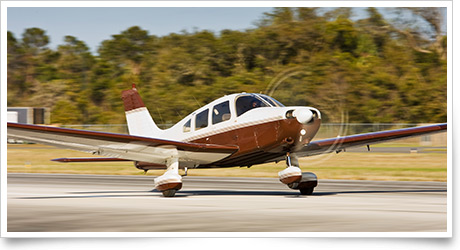training tipsTakeoff power or 'Take off power!'?
Preflight inspection completed, you attach the towbar to the nose strut and ease the airplane from its tiedown spot, stopping well away from neighboring aircraft for engine start.
Pre-takeoff checks are good and the engine runup is perfect. So you scan for traffic and announce your intention to remain in closed traffic, and taxi out for takeoff.
Lined up on the centerline of the 3,000-foot runway, you gradually advance the throttle, adding right rudder to maintain a straight track as the aircraft accelerates. You can feel the control surfaces coming alive as you take a quick glance at the oil-pressure gauge, and then look to the airspeed indicator.
At 55 knots you will rotate, and when airborne, accelerate to V Y, 79 knots.
What's this? Despite what you see outside and what you feel through the yoke and pedals, the airspeed indicator appears to be broken—it's not "coming alive" as it has on previous flights.
Instinctively you give the throttle an extra push—but it's already full forward. Carburetor heat? Off. Magnetos? Set on "both."
This is confusing! The airplane seems ready to fly. But wouldn't it be better to abort the takeoff—not something you have practiced much—and find out what's going on here? The midpoint of the runway is drawing near. What to do? All questions, no time.
That classic taildragger is somewhere in the pattern; now the thought strikes you that you looked over to admire it just before you went to remove the cover from the pitot tube beneath the airplane's left wing. Did you remove it?
Just as the nosewheel is lifting off, you idle the throttle to abort takeoff while there's still plenty of runway ahead, heaving a sigh of relief as the airplane starts to decelerate without the need for serious braking. As you taxi back to your tiedown spot to check the pitot tube cover, you make a mental note of the importance of closely following checklists and limiting distractions during preflight. training productsStall/spin awareness book now available in Apple iTunesRich "the Spin Doctor" Stowell has made two of his books, Emergency Maneuver Training and Stall/Spin Awareness , available on Apple's iTunes.
Note: Products listed have not been evaluated by ePilot editors unless otherwise noted. AOPA assumes no responsibility for products or services listed or for claims or actions by manufacturers or vendors. final examQuestion: What is the difference between night time and being able to log night time for the purposes of 14 CFR 61.57 night currency?
Answer: 14 CFR Definitions and Abbreviations defines night time as "the time between the end of evening civil twilight and the beginning of morning civil twilight, as published in the American Air Almanac, converted to local time." The FAA defines night differently for night currency in 14 CFR 61.57(b), which says that in order to act as pilot in command of an aircraft carrying passengers during the time period starting at one hour after sunset to one hour before sunrise, a pilot must have completed three takeoffs and three landings to a full stop in the preceding 90 days during the period from one hour after sunset to one hour before sunrise. Although evening civil twilight and morning civil twilight may be dark, this doesn't mean you can use takeoffs and landings flown during that time toward night currency. As the weather warms up and you find yourself wanting to fly into the evening, take a look at AOPA's subject report on night flying for other questions you might have.
Got a question for our technical services staff? Email [email protected] or call the Pilot Information Center, 800/872-2672. Don’t forget the online archive of “Final Exam” questions and answers, searchable by keyword or topic. |
 It's a great day for some solo takeoffs and landings. Traffic is light, and so are the winds as
It's a great day for some solo takeoffs and landings. Traffic is light, and so are the winds as 

